Kang G. Shin
Keypoints as Dynamic Centroids for Unified Human Pose and Segmentation
May 17, 2025Abstract:The dynamic movement of the human body presents a fundamental challenge for human pose estimation and body segmentation. State-of-the-art approaches primarily rely on combining keypoint heatmaps with segmentation masks but often struggle in scenarios involving overlapping joints or rapidly changing poses during instance-level segmentation. To address these limitations, we propose Keypoints as Dynamic Centroid (KDC), a new centroid-based representation for unified human pose estimation and instance-level segmentation. KDC adopts a bottom-up paradigm to generate keypoint heatmaps for both easily distinguishable and complex keypoints and improves keypoint detection and confidence scores by introducing KeyCentroids using a keypoint disk. It leverages high-confidence keypoints as dynamic centroids in the embedding space to generate MaskCentroids, allowing for swift clustering of pixels to specific human instances during rapid body movements in live environments. Our experimental evaluations on the CrowdPose, OCHuman, and COCO benchmarks demonstrate KDC's effectiveness and generalizability in challenging scenarios in terms of both accuracy and runtime performance. The implementation is available at: https://sites.google.com/view/niazahmad/projects/kdc.
Achieving the Safety and Security of the End-to-End AV Pipeline
Sep 05, 2024Abstract:In the current landscape of autonomous vehicle (AV) safety and security research, there are multiple isolated problems being tackled by the community at large. Due to the lack of common evaluation criteria, several important research questions are at odds with one another. For instance, while much research has been conducted on physical attacks deceiving AV perception systems, there is often inadequate investigations on working defenses and on the downstream effects of safe vehicle control. This paper provides a thorough description of the current state of AV safety and security research. We provide individual sections for the primary research questions that concern this research area, including AV surveillance, sensor system reliability, security of the AV stack, algorithmic robustness, and safe environment interaction. We wrap up the paper with a discussion of the issues that concern the interactions of these separate problems. At the conclusion of each section, we propose future research questions that still lack conclusive answers. This position article will serve as an entry point to novice and veteran researchers seeking to partake in this research domain.
DynaMIX: Resource Optimization for DNN-Based Real-Time Applications on a Multi-Tasking System
Feb 03, 2023Abstract:As deep neural networks (DNNs) prove their importance and feasibility, more and more DNN-based apps, such as detection and classification of objects, have been developed and deployed on autonomous vehicles (AVs). To meet their growing expectations and requirements, AVs should "optimize" use of their limited onboard computing resources for multiple concurrent in-vehicle apps while satisfying their timing requirements (especially for safety). That is, real-time AV apps should share the limited on-board resources with other concurrent apps without missing their deadlines dictated by the frame rate of a camera that generates and provides input images to the apps. However, most, if not all, of existing DNN solutions focus on enhancing the concurrency of their specific hardware without dynamically optimizing/modifying the DNN apps' resource requirements, subject to the number of running apps, owing to their high computational cost. To mitigate this limitation, we propose DynaMIX (Dynamic MIXed-precision model construction), which optimizes the resource requirement of concurrent apps and aims to maximize execution accuracy. To realize a real-time resource optimization, we formulate an optimization problem using app performance profiles to consider both the accuracy and worst-case latency of each app. We also propose dynamic model reconfiguration by lazy loading only the selected layers at runtime to reduce the overhead of loading the entire model. DynaMIX is evaluated in terms of constraint satisfaction and inference accuracy for a multi-tasking system and compared against state-of-the-art solutions, demonstrating its effectiveness and feasibility under various environmental/operating conditions.
Federated User Representation Learning
Sep 27, 2019

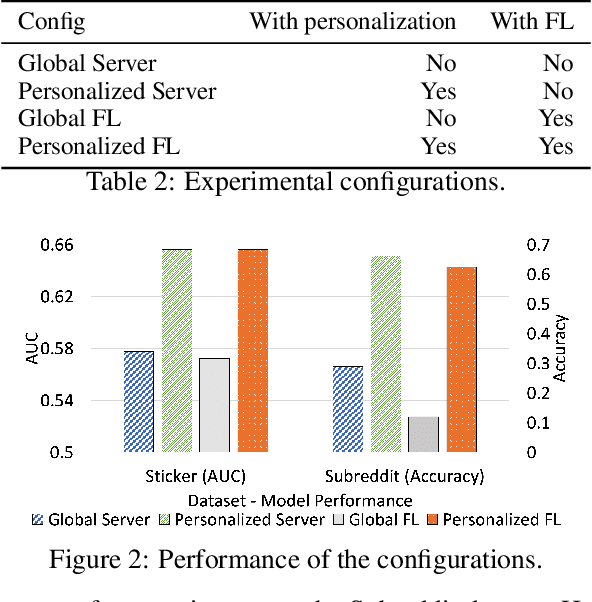
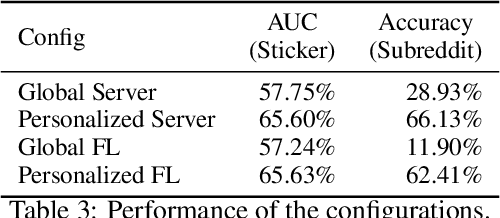
Abstract:Collaborative personalization, such as through learned user representations (embeddings), can improve the prediction accuracy of neural-network-based models significantly. We propose Federated User Representation Learning (FURL), a simple, scalable, privacy-preserving and resource-efficient way to utilize existing neural personalization techniques in the Federated Learning (FL) setting. FURL divides model parameters into federated and private parameters. Private parameters, such as private user embeddings, are trained locally, but unlike federated parameters, they are not transferred to or averaged on the server. We show theoretically that this parameter split does not affect training for most model personalization approaches. Storing user embeddings locally not only preserves user privacy, but also improves memory locality of personalization compared to on-server training. We evaluate FURL on two datasets, demonstrating a significant improvement in model quality with 8% and 51% performance increases, and approximately the same level of performance as centralized training with only 0% and 4% reductions. Furthermore, we show that user embeddings learned in FL and the centralized setting have a very similar structure, indicating that FURL can learn collaboratively through the shared parameters while preserving user privacy.
Polisis: Automated Analysis and Presentation of Privacy Policies Using Deep Learning
Jun 29, 2018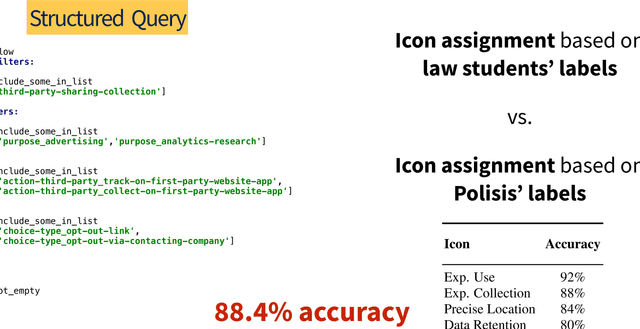

Abstract:Privacy policies are the primary channel through which companies inform users about their data collection and sharing practices. These policies are often long and difficult to comprehend. Short notices based on information extracted from privacy policies have been shown to be useful but face a significant scalability hurdle, given the number of policies and their evolution over time. Companies, users, researchers, and regulators still lack usable and scalable tools to cope with the breadth and depth of privacy policies. To address these hurdles, we propose an automated framework for privacy policy analysis (Polisis). It enables scalable, dynamic, and multi-dimensional queries on natural language privacy policies. At the core of Polisis is a privacy-centric language model, built with 130K privacy policies, and a novel hierarchy of neural-network classifiers that accounts for both high-level aspects and fine-grained details of privacy practices. We demonstrate Polisis' modularity and utility with two applications supporting structured and free-form querying. The structured querying application is the automated assignment of privacy icons from privacy policies. With Polisis, we can achieve an accuracy of 88.4% on this task. The second application, PriBot, is the first freeform question-answering system for privacy policies. We show that PriBot can produce a correct answer among its top-3 results for 82% of the test questions. Using an MTurk user study with 700 participants, we show that at least one of PriBot's top-3 answers is relevant to users for 89% of the test questions.
Plan Development using Local Probabilistic Models
Feb 13, 2013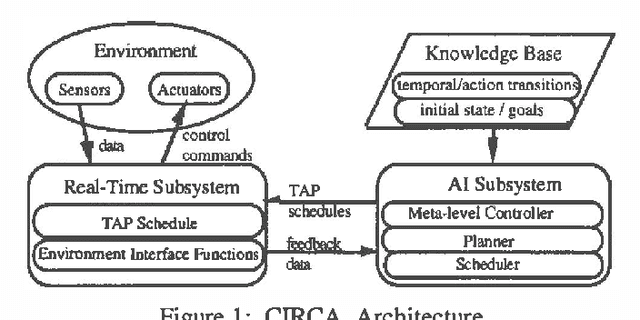


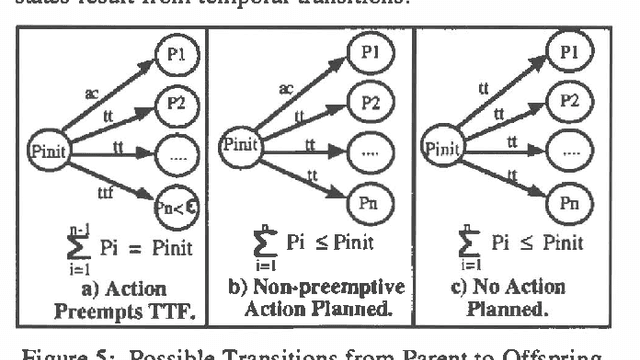
Abstract:Approximate models of world state transitions are necessary when building plans for complex systems operating in dynamic environments. External event probabilities can depend on state feature values as well as time spent in that particular state. We assign temporally -dependent probability functions to state transitions. These functions are used to locally compute state probabilities, which are then used to select highly probable goal paths and eliminate improbable states. This probabilistic model has been implemented in the Cooperative Intelligent Real-time Control Architecture (CIRCA), which combines an AI planner with a separate real-time system such that plans are developed, scheduled, and executed with real-time guarantees. We present flight simulation tests that demonstrate how our probabilistic model may improve CIRCA performance.
 Add to Chrome
Add to Chrome Add to Firefox
Add to Firefox Add to Edge
Add to Edge